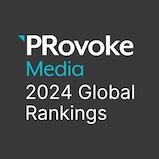Paul Holmes 25 Nov 2019 // 7:42AM GMT

LONDON — Almost a decade after the Association for the Measurement & Evaluation of Communications passed the Barcelona Principles and denounced the use of AVE (advertising value equivalency) for the measurement of public relations, almost half of industry leaders around the world continue to use AVEs, according to the 2020 ICCO World PR Report.
The report found that while the use of ad equivalency has almost died out in the UK (where it used by just 16% of respondents) and in North America (18%), it remains commonplace in developing markets such as Latin America (74%) and Africa and the Middle East (70%), but also — more surprisingly — in relatively developed markets such as western Europe (58%) and Asia-Pacific (56%).
In the majority of cases, those who use AVEs say they do so either because it is expected by clients (75%) or by client senior management (18%), suggesting that clients are either uninterested in evaluating return on their public relations investment, or unaware that real measurement tools are available.
Digging deeper into client requests when it comes for measurement, 44% said clients were likely to ask for media clippings; 22% said clients wanted engagement metrics (typically related to social media); 12% said awareness metrics were important to clients: 4% said clients wanted sales figures; and just 3% said clients were looking for advocacy metrics such as net promoter score.
Relatively few respondents (13%) say AVE is their own preferred evaluation method.
ICCO chief executive Francis Ingham found cause for optimism in this year’s numbers, however. “Over a sustained period of time, AMEC has raised standards of evaluation all around the world. Year after year, the numbers show that it is eroding poor measurement practice, that its tools are being adopted by an increasingly large number of practitioners. And that its message is being heard and understood.
“This year’s numbers represent a milestone. For the first time, a majority of respondents say that they do not ever use AVEs. There have been declines in AVE usage in all but one region. And they are rapidly approaching extinction in North America and the UK. But there is more to be done. And our focus must be on educating clients.”
Interestingly, awareness of AMEC and the Barcelona Principles varied widely from region to region — and in ways not clearly related to AVE usage. In the UK, for example, 72% of respondents said they followed AMEC principles, while in Eastern Europe 66% claimed to do so — and there were majorities favouring AMEC guidelines in western Europe and Africa.
But interestingly, only 41% of respondents from North America cited AMEC principles, while 45% said they had not heard of AMEC — giving rise to concerns that AMEC lacks relevance outside of Europe.
Better news on measurement came from agencies’ own commitment to improving their capabilities. When asked about expected areas of investment, measurement and evaluation was the number one choice, cited by 37% of respondents (ahead of hot topics such as influencer marketing and multimedia content creations). Similarly, when asked about future talent needs, skills in measurement ranked second (42%) behind only research, insight and planning expertise.
And when asked where technology was having the greatest impact on their businesses, measurement was again the number one pick (63%) ahead of research, insight and planning (51%), and marketing automation (33%).



































.jpg)

















